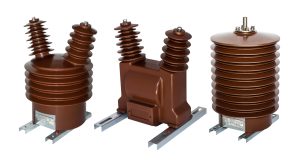Comprehensive Guide to Instrument Transformers: Applications Across Low, Medium, and High Voltage Systems
Introduction
Welcome to our in-depth exploration of instrument transformers, where we delve into their crucial role across various voltage systems—from low to high voltage. Whether you’re a seasoned electrical professional or new to the field, understanding the nuances of instrument transformers can significantly enhance your projects’ safety and efficiency. In this blog, we’ll guide you through the essentials, providing a clear overview of how these transformers operate and why they’re indispensable in residential, commercial, and industrial settings.
At Hecent, we pride ourselves on offering top-notch transformer solutions tailored to meet diverse electrical needs. Whether you are outfitting a small business or planning a large-scale power transmission system, knowing how to choose the right instrument transformer is key to success. Let’s dive into the world of instrument transformers and discover how selecting the right type can make a world of difference in your electrical applications.
Understanding Instrument Transformers
What are Instrument Transformers?
Instrument transformers are specialized devices used extensively in power systems to ensure accurate measurement and safe operation. They perform two primary functions: voltage transformation and current measurement, which are essential for effective system monitoring and control.
Types of Instrument Transformers
Current Transformers (CTs)
Current transformers are designed to provide a scaled-down current output that is proportional and safe to measure compared to the high currents flowing in power lines. They are used for metering and protection in electrical systems, helping to accurately gauge current levels without directly interfacing with the high voltage circuits.
Potential Transformers (PTs)
Also known as voltage transformers, PTs provide a scaled-down voltage output that makes it safe and practical to monitor the actual voltage on the lines. These are crucial for maintaining the reliability and efficiency of the power supply, ensuring that voltage levels are within specified limits.
Enhancing Safety and Accuracy
Instrument transformers play a pivotal role in enhancing both safety and accuracy in power systems:
- Safety: By isolating the measurement circuits from the high power voltages and currents, instrument transformers protect both the equipment and the personnel from high voltage levels.
- Accuracy: They allow for precise measurements of voltage and current, which are critical for effective power management and billing. Accurate data from CTs and PTs is vital for system diagnostics, maintenance planning, and operational efficiency.
Understanding these fundamentals provides a solid foundation for exploring how instrument transformers are used across different voltage levels to suit specific applications. Whether for low, medium, or high voltage, instrument transformers ensure that electrical systems operate smoothly, safely, and efficiently. As we proceed, we’ll delve deeper into the specific applications and considerations for each voltage level.
Low Voltage Instrument Transformers
Definition and Applications
Low voltage instrument transformers are designed for systems with voltage levels typically below 1,000 volts. These transformers are extensively used in residential and commercial settings, where they play a critical role in metering electricity usage and protecting electrical equipment.
Advantages of Low Voltage Transformers
Low voltage instrument transformers offer several advantages that make them ideal for smaller scale applications:
- Safety: They provide a safe means of monitoring electrical parameters by stepping down high currents to manageable levels, ensuring that personnel and equipment are protected from electrical hazards.
- Cost-Effectiveness: Low voltage transformers are generally less expensive than their medium and high voltage counterparts, making them a cost-effective solution for managing power in buildings and small facilities.
- Ease of Installation: Their smaller size and lower voltage requirements make them easier to install and integrate into existing electrical systems without extensive modifications.
Key Considerations
When selecting and installing low voltage instrument transformers, there are several important factors to consider:
- Accuracy: Ensure that the transformer meets the necessary accuracy class for its intended application, whether for billing purposes or operational monitoring.
- Load Characteristics: Understanding the load characteristics is crucial to selecting the right transformer that can handle the expected electrical load without compromising performance or safety.
- Environmental Conditions: Consider the environmental conditions such as temperature, humidity, and potential corrosive atmospheres, which can affect the longevity and reliability of the transformers.
Example Applications
Low voltage instrument transformers are used in a variety of applications, including:
- Residential Metering: Used to accurately measure and report electricity usage in homes, aiding in precise billing and energy management.
- Commercial Buildings: Help monitor energy usage and manage power distribution in commercial settings like offices, small businesses, and schools.
- Protection Devices: Integrated into circuit breakers and protective relays to ensure they activate appropriately under fault conditions, safeguarding electrical systems from damage.
Understanding the specific requirements and challenges of low voltage applications can guide the selection of the most appropriate instrument transformers, ensuring they perform optimally within their intended environments. As we move on to medium voltage transformers, we will see how the requirements and applications evolve with increasing voltage levels.
Medium Voltage Instrument Transformers
Definition and Common Uses
Medium voltage instrument transformers are utilized in electrical systems operating between 1,000 volts and 35,000 volts. These transformers are crucial in industrial settings, utility substations, and large commercial complexes where managing higher power levels efficiently and safely is essential.
Role in Industrial and Utility Applications
Medium voltage transformers serve key roles in complex electrical systems:
- Power Quality Monitoring: They are instrumental in monitoring system performance and ensuring consistent power quality, which is crucial for industrial processes that depend on stable and reliable electrical supply.
- Grid Connectivity: In utility applications, these transformers help in integrating and managing multiple power sources and maintaining grid stability.
Key Features and Design Aspects
When designing and selecting medium voltage instrument transformers, several features must be considered to ensure they meet the specific needs of medium voltage systems:
- Robust Construction: These transformers need to withstand higher voltages and harsher operational environments than low voltage transformers.
- Enhanced Insulation: Proper insulation is critical to prevent any electrical failures that could lead to severe damage or outages.
- High Accuracy Levels: Accurate voltage and current measurement is vital for effective control and operational efficiency in medium voltage applications.
Challenges and Solutions
Implementing medium voltage transformers comes with its set of challenges:
- Complex Installation: The installation of medium voltage transformers is more complex and requires careful planning and execution to ensure safety and functionality.
- Maintenance Requirements: Regular maintenance is crucial to ensure long-term reliability and to prevent potential failures that could be costly and dangerous.
Example Applications
Medium voltage instrument transformers are employed in various applications, demonstrating their versatility and importance:
- Industrial Plants: Used in large manufacturing facilities to monitor and control the electrical conditions, ensuring that machinery operates within safe and efficient parameters.
- Renewable Energy Integration: Essential for integrating renewable energy sources like wind and solar into the main grid, helping to monitor and regulate the voltage and current supplied.
- Utility Substations: Play a critical role in substations for effective distribution of electricity across different areas, ensuring that the transformation and distribution of power are carried out efficiently.
The use of medium voltage instrument transformers is a critical component in managing the complexities of medium voltage electrical systems. They ensure operational reliability, safety, and efficiency, which are imperative in industrial and utility settings. Next, we will explore high voltage instrument transformers, where the stakes and complexities increase further.
High Voltage Instrument Transformers
Definition and Critical Applications
High voltage instrument transformers are designed for use in systems where voltages exceed 35,000 volts. These transformers are essential in large-scale power transmission networks and major power generation facilities, where they facilitate the safe and accurate measurement of high voltages and currents.
Importance in Power Transmission
High voltage transformers play a crucial role in:
- Transmission Line Monitoring: They monitor the high voltages and currents transmitted over long distances, ensuring the stability and efficiency of the power grid.
- System Protection: These transformers are key components in protection schemes, helping to detect and respond to system faults swiftly to prevent widespread power outages.
Special Design and Safety Features
Given the extreme operating conditions, high voltage instrument transformers have unique designs and safety features:
- Superior Insulation and Arc Suppression: High voltage transformers are equipped with advanced insulation materials and designs to handle the high stress and prevent electrical arcs.
- Rugged Construction: They are built to endure environmental and operational stresses, including high winds, temperature fluctuations, and moisture.
Maintenance and Monitoring Requirements
High voltage transformers require stringent maintenance and monitoring:
- Regular Inspections: To ensure reliability and performance, these transformers must be regularly inspected for signs of wear and degradation.
- Advanced Diagnostic Tools: Use of technologies such as thermal imaging and acoustic monitoring helps in early detection of potential issues before they lead to failures.
Example Applications
High voltage instrument transformers are used in various high-stakes environments:
- Large Power Plants: Ensuring accurate measurement and control in power plants, which is vital for the production and initial distribution of electricity.
- Major Substation Operations: Facilitating the management and routing of electricity through substations that interface with high voltage transmission lines.
- Interconnection Points: Managing the flow of electricity between different power grids and across regional and national boundaries.
High voltage instrument transformers are indispensable in managing the complexities of high voltage power systems. They ensure that electrical power is transmitted efficiently and safely across vast distances, supporting the backbone of national power infrastructure. As we conclude our exploration of instrument transformers across different voltage levels, it becomes clear how crucial these devices are to the integrity and functionality of modern electrical networks.
Selecting the Right Instrument Transformer
Choosing the appropriate instrument transformer for your specific application involves a careful evaluation of several key factors. This selection process ensures that the transformer not only meets the technical requirements but also provides reliable and accurate performance under the expected operational conditions.
| Type of Instrument Transformer | Voltage Range | Applications |
|---|---|---|
| Low Voltage Transformers | Up to 1,000 volts | Residential and commercial buildings, metering, protection in low power devices |
| Medium Voltage Transformers | 1,000 volts to 35,000 volts | Industrial plants, utility substations, renewable energy integration |
| High Voltage Transformers | Above 35,000 volts | Large power plants, major substation operations, high voltage power transmission |
Factors to Consider
When selecting an instrument transformer, consider the following critical factors:
- Voltage Level: Match the transformer to the voltage level of the application—low, medium, or high voltage—to ensure it can handle the electrical load and operational environment without compromising safety or efficiency.
- Accuracy Requirements: Depending on the application, the accuracy class of the transformer is crucial. For billing purposes, a higher accuracy might be required, whereas for general monitoring, a standard accuracy may suffice.
- Burden Capability: The transformer must be able to support the burden (the load imposed on its secondary side) without significant performance degradation. This includes the energy consumed by meters, protective relays, and other connected devices.
- Environmental Conditions: Assess the environmental conditions such as temperature extremes, humidity, potential chemical or corrosive exposures, and mechanical stresses. These factors can affect the transformer’s longevity and reliability.
- Regulatory and Compliance Issues: Ensure that the transformer meets all applicable standards and regulations, which might include international or local codes depending on the location and application.
Consulting with Experts
Given the complexities involved in choosing the right instrument transformer, consulting with experts is often beneficial:
- Technical Support: Manufacturers like Hecent can provide valuable guidance based on extensive industry experience and technical expertise.
- Custom Solutions: Often, standard products may not perfectly fit specific needs. In such cases, Hecent can help design and manufacture custom transformers tailored to the exact requirements of a project.
Why Accuracy and Safety are Paramount
- Safety: Proper selection of instrument transformers is vital for protecting equipment and personnel from the dangers of high voltage and currents.
- Accuracy: Accurate data from instrument transformers is crucial for operational management, efficient power distribution, and reliable billing.
Selecting the right instrument transformer is not just a matter of specification matching; it also involves understanding the dynamics of the electrical system where the transformer will be used. This thorough approach ensures that the transformer will perform optimally, maintaining system integrity and functionality.
Why Choose Hecent for Your Instrument Transformer Needs?
When it comes to ensuring the efficiency, reliability, and safety of your electrical systems, selecting the right partner for your instrument transformer needs is crucial. Hecent stands out as a premier provider, dedicated to delivering high-quality transformer solutions that are tailored to meet the unique requirements of each project.
Hecent’s Commitment to Quality and Reliability
- Expertise: With years of experience in the industry, Hecent’s team of experts is equipped with the knowledge and skills to provide insights and solutions for any electrical system challenge.
- Quality Products: Hecent prides itself on manufacturing transformers that meet the highest standards of quality and reliability, ensuring that they perform under the most demanding conditions.
Range of Products and Customization Options
- Comprehensive Product Line: Hecent offers a wide range of instrument transformers designed to accommodate low, medium, and high voltage applications, ensuring compatibility with virtually any system configuration.
- Customization Capabilities: Understanding that one size does not fit all, Hecent specializes in customizing products to fit specific needs, whether for unique voltage requirements, special environmental conditions, or particular accuracy specifications.
Customer-Centric Service and Support
- Customer Support: Hecent’s commitment to customer service means providing continuous support from the initial consultation through to post-installation, ensuring that every client’s needs are met with satisfaction.
- Technical Assistance: Hecent provides ongoing technical support to help with installation, troubleshooting, and maintenance, ensuring that your transformers continue to operate efficiently over their lifespan.
How Hecent Supports Clients
Hecent’s approach to client relationships is centered on partnership and trust:
- Consultative Approach: Hecent works closely with clients to understand their specific challenges and requirements, offering tailored advice and solutions.
- Long-term Partnerships: By focusing on long-term relationships, Hecent ensures that clients receive consistent support and access to the latest technologies and advancements in transformer solutions.
Conclusion
Choosing Hecent for your instrument transformer needs means partnering with a leader in electrical component technology. With Hecent, you not only receive a product that meets your technical requirements but also gain a partner dedicated to your project’s success. Whether you need a standard solution or a customized setup, Hecent is equipped to help you choose the perfect instrument transformer for your needs.





